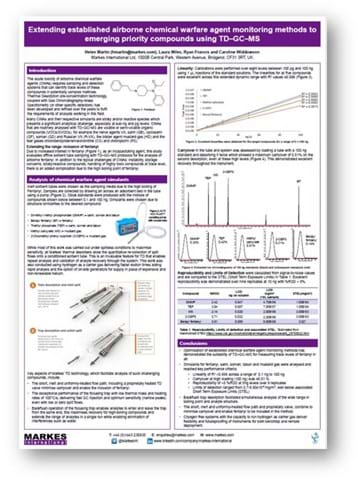
Extending established chemical warfare agent monitoring methods to emerging priority compounds using TD–GC–MS
Presented at International workshop on the analysis of chemical warfare agents to mark the 50th anniversary of VERIFIN, November 2023
The acute toxicity of airborne chemical warfare agents (CWAs) requires sampling and detection systems that can identify trace levels of these compounds in potentially complex matrices.
CWAs that are routinely analysed with TD–GC–MS are volatile or semi-volatile organic compounds (VOCs/SVOCs), for example the nerve agents VX, sarin (GB), cyclosarin (GF), soman (GD) and Russian VX (R-VX), the blister agent mustard gas (HD) and the tear gases chlorobenzylidenemalononitrile (CS) and chloropicrin (PS).
This poster summarises a study that evaluated offline sorbent tube sampling with TD–GC–MS protocols for the analysis of airborne fentanyl, due to its potential incapacitation capabilities. In addition to the typical challenges of CWAs – instability, storage concerns, sticky/reactive compounds, handling of highly toxic compounds at trace level – there is an added complication due to the high boiling point of fentanyl.
Download the poster to find out how we have optimised established CWA monitoring methods to effectively measure trace levels of fentanyl in air using TD–GC–MS.





